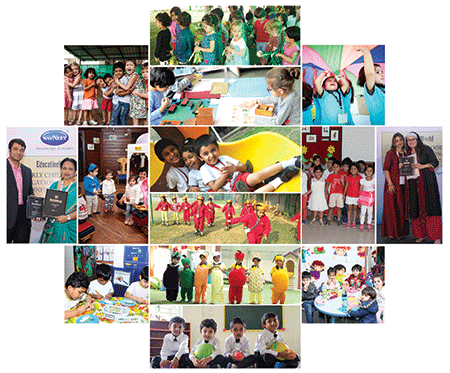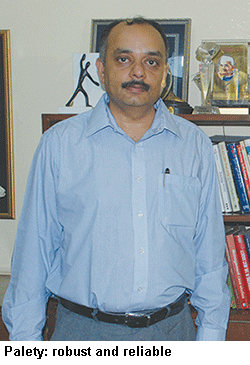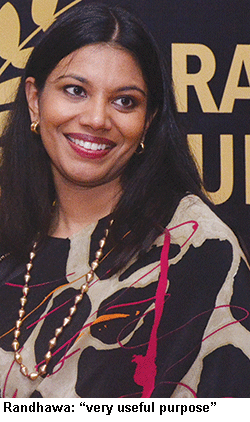Educationworld India Preschool Rankings 2017-18
To compile this year’s league tables of India’s most admired preschools, 100 field personnel of the Delhi-based market research company C fore interviewed 8,002 sample respondents comprising preschool principals, teachers and parents with at least one child in preschool in 16 cities countrywide to rate and rank proprietary and franchised pre-primaries separately – Dilip Thakore & Summiya Yasmeen
 In the 18th anniversary issue of EducationWorld published last month (November), your editors candidly confessed that EW, which published its first issue in November 1999 on the eve of the new millennium — a time of great hope and euphoria — in a modest way with the ambitious mission statement to “build the pressure of public opinion to make education the #1 item on the national agenda”, has for a variety of reasons — the vested interest of the political class in mass illiteracy and quasi-literacy, indifference of the intelligentsia, influential middle class and mainstream media to public K-12 education — failed to attain this mission.
In the 18th anniversary issue of EducationWorld published last month (November), your editors candidly confessed that EW, which published its first issue in November 1999 on the eve of the new millennium — a time of great hope and euphoria — in a modest way with the ambitious mission statement to “build the pressure of public opinion to make education the #1 item on the national agenda”, has for a variety of reasons — the vested interest of the political class in mass illiteracy and quasi-literacy, indifference of the intelligentsia, influential middle class and mainstream media to public K-12 education — failed to attain this mission.
Eighteen years later, 21st century India continues to unashamedly host the world’s largest population of illiterates, school dropouts and pool of unemployable school and college/university graduates. Despite several high-powered national commissions starting with the Kothari Commission (1966) and ending with the T.S.R. Subramanian Committee (2016) having recommended raising the national (Centre plus states) annual outlay for public education to 6 percent of GDP, post-independence India’s investment in public education has averaged 3.5 percent for the past 70 years. Against this the global average is 5 percent with the developed OECD nations allocating 7-10 percent of their annual GDP towards public education. The price of sustained neglect of mass education — commonly accepted as the foundational bedrock of national development — has been heavy. The country’s population has tripled since independence, industrial and agriculture productivity measured in terms of output per employee and crop yields per hectare, is arguably the lowest worldwide and sanitation and public healthcare standards are rock-bottom.
However although this publication hasn’t been able to sufficiently arouse political will and public conscience to confer the invaluable gift of primary-secondary education upon India’s hapless children, we have played a major role in impacting the critical importance of early childhood care and education (ECCE) upon the indifferent public. After the Los Angeles-based educationist-philanthropist Lowell Milken who in the early years of the new millennium owned KinderCare — the largest chain of private pre-primaries in the US — threw a lifeline to this struggling publication in 2005, your editors were awakened to the vital importance of delivering professionally administered ECCE to children below age five. Starting in 2010, this publication has convened seven international conferences (latterly converted into national conferences after it became obvious that the gap in ECCE between developed OECD and even South-east Asian nations and India is too wide) in Mumbai and Bangalore to create greater awareness of the basic principles and best practices of ECCE. This was necessary because until then, early childhood education was widely synonymous with unstructured play and baby-sitting.
Moreover, to impact the importance of professionally administered ECCE upon the minds of educators and the public, we introduced the annual EducationWorld India Preschool Rankings in which we began rating the best preschools in the country’s major metros and cities on ten parameters of ECCE excellence (teacher competence, teacher welfare, safety and hygiene etc) and ranking them inter se.
In this context, it’s pertinent to note that the annual EW India Preschool Rankings are based on field research in which specially constituted clusters of sample respondents of preschool principals, teachers and parents with at least one child in preschool, varying in size from 335 to 760 in 16 cities, are interviewed and asked to rate preschools on ten parameters of ECCE excellence. This year, 8,002 knowledgeable sample respondents across the country were interviewed by 100 field personnel of the highly-respected Delhi-based market research and opinion polls company Centre for Forecasting & Research (C fore, estb. 2000).
Although several pretender publications have followed in our footsteps and introduced their own preschool rankings based on differing opaque methodologies or closed room jury evaluations, we believe EducationWorld’s city-based ranking league tables are more credible because not only are our field-based surveys more broad-based and designed to reduce subjectivity to the minimum, even knowledgeable preschool educationists are unlikely to be aware of the relative merits of pre-primaries in habitations other than their own. Therefore, the annual EW preschools league tables based on local evaluations of large numbers of knowledgeable respondents are more robust and truly reflect the relative merits of pre-primaries in the 16 selected cities.
 Every sample respondent was shown a list of the most well-known pre-selected preschools in their city. They were then asked to rate the preschools that they were aware of on a ten-point scale across ten parameters. The parameters of assessment were competence of faculty, teacher welfare, infrastructure, individual attention to students, value for money, leadership/management quality, parental involvement, innovative teaching, safety and hygiene and facilities for special needs children. Preschools that were assessed by less than 30 respondents were not considered for ranking. The scores awarded to every preschool under each parameter were totalled to rank them. All the parameters were given equal weightage except ‘competence of teachers’ which was given double the weightage. I am satisfied that the annual EW India Preschool Rankings league tables are the most reliable and reflect the true all-round merits of the country’s best prechools,” says Premchand Palety, the founder-CEO of C fore whose broad based client list includes the Hindustan Times, Mint, Nestle and the Congress party.
Every sample respondent was shown a list of the most well-known pre-selected preschools in their city. They were then asked to rate the preschools that they were aware of on a ten-point scale across ten parameters. The parameters of assessment were competence of faculty, teacher welfare, infrastructure, individual attention to students, value for money, leadership/management quality, parental involvement, innovative teaching, safety and hygiene and facilities for special needs children. Preschools that were assessed by less than 30 respondents were not considered for ranking. The scores awarded to every preschool under each parameter were totalled to rank them. All the parameters were given equal weightage except ‘competence of teachers’ which was given double the weightage. I am satisfied that the annual EW India Preschool Rankings league tables are the most reliable and reflect the true all-round merits of the country’s best prechools,” says Premchand Palety, the founder-CEO of C fore whose broad based client list includes the Hindustan Times, Mint, Nestle and the Congress party.
 Amrita Randhawa, the Bangalore-based founder head of faculty of TEDA (The Educator Development Academy) and former head of faculty at the Asian International College (India) — a subsidiary of AIC, Singapore — believes that the annual EW India Preschool Rankings have served a “very useful purpose” inasmuch as they have started a “serious nationwide conversation” on early childhood care and education “In a society in which there was minimal awareness of the difference between the neighbourhood playschool and preschools based on the true philosophies of Dr. Maria Montessori and Reggio Emilia, the EW annual preschool rankings have generated great awareness of the important parameters of quality of teachers, teacher-pupil ratios, safety and hygiene and actual curricular transactions,” says Randhawa, an alumna of the Mount Holyoke College, Massachusetts with a Masters from the Harvard School of Education and teaching experience at the Wellesley College Child Study Center, Boston, and The Teacher Foundation, Bangalore.
Amrita Randhawa, the Bangalore-based founder head of faculty of TEDA (The Educator Development Academy) and former head of faculty at the Asian International College (India) — a subsidiary of AIC, Singapore — believes that the annual EW India Preschool Rankings have served a “very useful purpose” inasmuch as they have started a “serious nationwide conversation” on early childhood care and education “In a society in which there was minimal awareness of the difference between the neighbourhood playschool and preschools based on the true philosophies of Dr. Maria Montessori and Reggio Emilia, the EW annual preschool rankings have generated great awareness of the important parameters of quality of teachers, teacher-pupil ratios, safety and hygiene and actual curricular transactions,” says Randhawa, an alumna of the Mount Holyoke College, Massachusetts with a Masters from the Harvard School of Education and teaching experience at the Wellesley College Child Study Center, Boston, and The Teacher Foundation, Bangalore.
Moreover, Randhawa believes the follow-up EW annual ECCE conference also serves the very useful purpose for providing an “important forum for ECCE professionals and teachers” to network and discuss latest developments and best practices being implemented countrywide. “I look forward to the EW annual ECCE conferences because one not only meets early childhood education professionals, practitioners and promoters, but also researchers,” adds Randhawa, who will be leading a workshop at the forthcoming eighth EW ECCE National Conference scheduled for January 20 in Bangalore.
In 2013, towards the fag end of its undistinguished ten-year term in office at the Centre, under pressure from EducationWorld and ECCE educationists countrywide, the Congress-led UPA-II government approved a draft National Early Childhood Care and Education policy prepared by the Union women and child development ministry. We believe it would greatly serve the public interest and the interests of the country’s 164 million children under age 5 if this policy draft — which has disappeared off the radar of the BJP-led NDA government — is revived and presented for public and parliamentary discussion because currently only an estimated 10 million children in private preschools receive ECCE of differing quality. Of the remaining 154 million, 84 million receive poor quality ECCE in the country’s 1.3 million Central government anganwadis — essentially nutritional centres for lactating mothers and newborns — while the remaining 70 million children are left to fend for themselves — a waste of high potential human resources of colossal scale.
The public interest demands that all 164 million children in the 0-5 age group countrywide are urgently provided high quality professionally administered early childhood care and education. It’s no exaggeration to state that the country’s future depends upon it.
With Paromita Sengupta & Sruthy Susan Ullas (Bangalore); Hemalatha Raghupath (Chennai) & Baishali Mukherjee (Kolkata)
To read the EW India Preschool Rankings 2017 please visit: http://www.educationworld.in/rank-preschool/2017/















Add comment